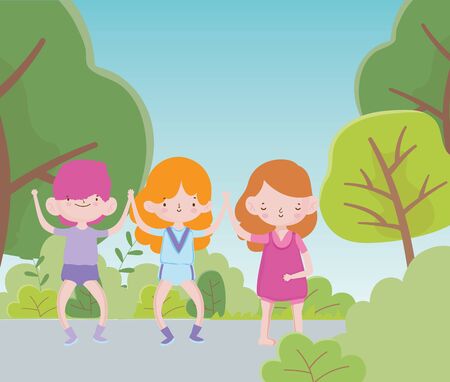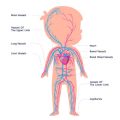1. Introduction to Multidisciplinary Teams in ASD Rehabilitation
Autism spectrum disorder (ASD) is a complex neurodevelopmental condition that affects how children communicate, interact, and process the world around them. In the United States, it’s estimated that 1 in 36 children are diagnosed with ASD. Every child on the spectrum has unique strengths and challenges, which means there’s no “one size fits all” approach when it comes to their care. This is why multidisciplinary teams play such a vital role in pediatric rehabilitation for kids with ASD.
Why a Multidisciplinary Approach Matters
Children with ASD often have needs that go beyond what any single professional can address. For example, they may need support with language, social skills, motor coordination, sensory processing, and even daily living activities. In a pediatric rehab setting, bringing together experts from different backgrounds helps create a holistic plan tailored to each child’s needs.
Common Members of Multidisciplinary Teams for ASD Rehab
| Professional | Main Role |
|---|---|
| Pediatrician | Coordinates overall health care and monitors development |
| Speech-Language Pathologist (SLP) | Supports communication skills and language development |
| Occupational Therapist (OT) | Helps with fine motor skills, daily tasks, and sensory processing |
| Physical Therapist (PT) | Improves gross motor skills and mobility |
| Behavioral Therapist (e.g., BCBA) | Addresses behavior challenges using evidence-based techniques like ABA therapy |
| Psychologist or Counselor | Supports emotional well-being and social skills development |
| Special Education Teacher | Adapts learning strategies in school settings |
| Social Worker or Case Manager | Connects families with community resources and support systems |
The Value of Teamwork in ASD Pediatric Rehab Settings
When these specialists collaborate closely—sharing insights, updates, and recommendations—the result is a coordinated plan that addresses each aspect of the child’s growth. In the American healthcare system, parents or caregivers are seen as crucial partners too. Their input shapes therapy goals, making the process more effective and personalized.
Cultural Considerations in the U.S.
The diverse backgrounds of American families mean that multidisciplinary teams must be culturally sensitive and inclusive. This ensures every family feels heard, respected, and involved in decision-making throughout their child’s rehabilitation journey.
2. Key Roles and Professions in ASD Rehab Teams
In pediatric rehabilitation for Autism Spectrum Disorder (ASD), a multidisciplinary team approach is essential for providing holistic, child-centered care. Each professional brings unique skills and perspectives to help children reach their fullest potential. Here’s a look at the core team members and how they contribute:
Occupational Therapists (OTs)
Occupational therapists focus on helping kids develop everyday skills that promote independence. This might include tasks like getting dressed, feeding themselves, or participating in classroom activities. OTs also address sensory processing issues, which are common in children with ASD.
Speech-Language Pathologists (SLPs)
Speech-language pathologists support communication development. They work on language skills, both verbal and non-verbal, and help with social communication, such as taking turns in conversation or understanding body language. SLPs may also assist with feeding and swallowing challenges.
Physical Therapists (PTs)
Physical therapists help children improve their movement and coordination. For kids with ASD, PTs might address issues like balance, strength, posture, or motor planning so that children can participate in play, sports, or school activities more easily.
Psychologists
Psychologists play a vital role by assessing developmental, emotional, and behavioral needs. They may provide therapy for anxiety, social skills training, or support families through behavioral strategies tailored to each child’s unique needs.
Social Workers
Social workers act as advocates and liaisons between families and service providers. They connect families with community resources, offer counseling, and support parents as they navigate the healthcare and education systems in the United States.
Special Education Teachers
Special education teachers design individualized learning plans to meet each student’s needs. They work closely with therapists and families to adapt teaching strategies that support academic growth, social participation, and life skills within the school environment.
Core Team Members at a Glance
| Profession | Main Focus | Key Responsibilities |
|---|---|---|
| Occupational Therapist | Daily living & sensory processing | Independence in self-care; sensory integration; fine motor skills |
| Speech-Language Pathologist | Communication & feeding | Language development; social skills; feeding therapy |
| Physical Therapist | Movement & coordination | Gross motor skills; balance; posture improvement |
| Psychologist | Mental health & behavior | Cognitive assessments; therapy; behavioral interventions |
| Social Worker | Family & community support | Counseling; resource connection; advocacy for services |
| Special Education Teacher | Academic & life skill learning | IEP development; classroom accommodations; skill-building instruction |
This collaborative approach ensures children with ASD receive comprehensive care tailored to their strengths and needs. Each professional’s expertise helps build a supportive network for both the child and their family.

3. Benefits of a Multidisciplinary Approach
When it comes to supporting children with Autism Spectrum Disorder (ASD) in the United States, working with a multidisciplinary team offers many clear advantages. This approach brings together professionals from different fields—like occupational therapists, speech-language pathologists, physical therapists, psychologists, and special educators—to address the unique needs of each child and their family.
Family-Centered Care: Putting Families First
American family-centered care is at the heart of pediatric rehabilitation. In a multidisciplinary team, families are treated as key members of the care team. Parents and caregivers share their insights about their child’s strengths, challenges, and daily routines. This collaboration helps ensure that therapy goals fit the real-life needs of both the child and their family.
How Family-Centered Care Works in Practice
| Team Member | Role in Family-Centered Care |
|---|---|
| Parents/Caregivers | Share personal experiences and set priorities for therapy goals |
| Therapists & Educators | Listen to family needs and adjust interventions accordingly |
| Child | Participates in goal setting and feedback whenever possible |
Enhanced Goal Setting and Communication
One of the strongest benefits of a multidisciplinary approach is improved communication among team members. Regular meetings allow everyone to share updates, review progress, and brainstorm solutions together. This leads to more meaningful and realistic goals that reflect all aspects of a childs development—from social skills to motor abilities.
Key Advantages of Team Communication
- Families receive clear, consistent messages from all professionals involved.
- Treatment plans are coordinated, avoiding overlap or conflicting strategies.
- Progress is monitored from multiple perspectives, making adjustments easier and faster.
Comprehensive Treatment Plans for Better Outcomes
A multidisciplinary team can create a holistic treatment plan that addresses every area where a child with ASD might need support. For example, if a child struggles with both language delays and fine motor skills, speech and occupational therapists can work together to create activities that help with both areas at once. This comprehensive planning often leads to better long-term outcomes for children and their families.
Positive Outcomes for Children and Families
- Children make gains across multiple developmental areas at once.
- Families feel empowered, informed, and supported throughout the process.
- The transition between home, school, and community settings becomes smoother because everyone is working toward shared goals.
This collaborative style reflects American values of inclusion, teamwork, and respecting each family’s unique journey. By bringing together diverse expertise in one unified plan, multidisciplinary teams help children with ASD reach their full potential while ensuring families are never alone on their path.
4. Challenges Faced by Multidisciplinary Teams
Working as a multidisciplinary team in pediatric rehabilitation for children with Autism Spectrum Disorder (ASD) brings together professionals from various backgrounds, such as occupational therapists, speech-language pathologists, physical therapists, psychologists, and physicians. While this team approach offers many benefits, it also comes with its own set of challenges in the U.S. healthcare environment.
Common Barriers for Multidisciplinary Teams
| Challenge | Description | Example in U.S. Practice |
|---|---|---|
| Communication Gaps | Difficulties in sharing updates and plans between different professionals and families. | Therapists may use different charting systems or have limited time for team meetings. |
| Cultural & Linguistic Diversity | Families and providers may come from different backgrounds, affecting understanding and trust. | A family who speaks Spanish at home may not fully understand therapy instructions given only in English. |
| Insurance Coverage | Insurance policies can limit access to certain services or number of therapy sessions allowed. | A child may only receive a set number of speech therapy visits per year, regardless of need. |
| Resource Constraints | Lack of staff, equipment, or funding can impact the quality and availability of services. | Rural clinics may not have specialists like behavior analysts on staff. |
| Differing Treatment Philosophies | Team members may have different ideas about what therapies or approaches are best for the child. | A physician might prioritize medication while a therapist focuses on sensory integration techniques. |
Real-World Impact on Families and Teams
These barriers can sometimes lead to frustration for both families and team members. For example, miscommunication between providers might result in duplicated efforts or missed opportunities for progress. When insurance doesn’t cover enough therapy sessions, families may need to make tough choices about which services to prioritize. Cultural misunderstandings can make it harder to build trust with families and deliver care that meets their unique needs.
Addressing Challenges Together
Despite these hurdles, many teams across the U.S. are finding creative ways to work together more effectively. Open communication, cultural humility, flexible scheduling, and advocacy for policy changes are some strategies that help teams overcome these common obstacles in ASD pediatric rehabilitation.
5. Success Stories and Best Practices from the USA
Real-Life Examples of Multidisciplinary Teamwork in ASD Pediatric Rehabilitation
Across the United States, multidisciplinary teams have made a big difference in the lives of children with Autism Spectrum Disorder (ASD). These teams usually include professionals like occupational therapists, speech-language pathologists, physical therapists, psychologists, special educators, social workers, and sometimes physicians. By working together, they create individualized treatment plans that address each child’s unique needs.
Example 1: Team-Based Care at a Community Health Center
At a community health center in California, a young boy named Ethan was struggling with communication and daily living skills. The center formed a team including a speech therapist, occupational therapist, psychologist, and his classroom teacher. Weekly team meetings helped everyone stay updated on Ethan’s progress. The speech therapist focused on building functional language, while the occupational therapist worked on sensory integration and fine motor skills. Over six months, Ethan’s ability to communicate his needs improved significantly—he began using short phrases and participated more actively in group activities at school.
Example 2: School-Based Collaborative Program
In Texas, a public elementary school started a collaborative program for students with ASD. The program brought together special education teachers, behavior analysts, and social workers who met bi-weekly to discuss student goals and challenges. For one student named Mia, who struggled with transitions between classes, the team developed a visual schedule and used positive reinforcement strategies recommended by the behavior analyst. Within two months, Mia was able to transition independently with minimal support.
Evidence-Based Strategies Used by Multidisciplinary Teams
Teams across American clinical settings use several evidence-based strategies to help children with ASD reach their goals. Here are some common approaches:
| Strategy | Description | Professional Involved |
|---|---|---|
| Applied Behavior Analysis (ABA) | Uses positive reinforcement to encourage desired behaviors and reduce challenging ones. | Behavior Analyst, Teachers |
| Social Skills Groups | Small group sessions where kids practice communication and play skills. | Speech-Language Pathologist, Social Worker |
| Sensory Integration Therapy | Activities designed to help children process sensory information better. | Occupational Therapist |
| Parent Training & Support | Coaching parents to use techniques at home for consistency. | All Team Members |
| Individualized Education Plans (IEPs) | Personalized learning plans outlining specific goals and services for each child. | Special Educator, Psychologist, Therapists |
The Power of Collaboration: Key Takeaways from US Practice
- Regular Communication: Weekly or bi-weekly team meetings ensure everyone is on the same page.
- Family Involvement: Parents are considered essential members of the team and are regularly included in planning sessions.
- Cultural Sensitivity: Teams adapt interventions based on family culture and preferences for better outcomes.
- Progress Monitoring: Frequent tracking of goals allows for timely adjustments to therapy plans.
This approach has led to many children reaching milestones that once seemed out of reach—whether it’s speaking their first words or joining peers in classroom activities. Multidisciplinary teamwork continues to be a cornerstone of effective ASD pediatric rehabilitation across America.


